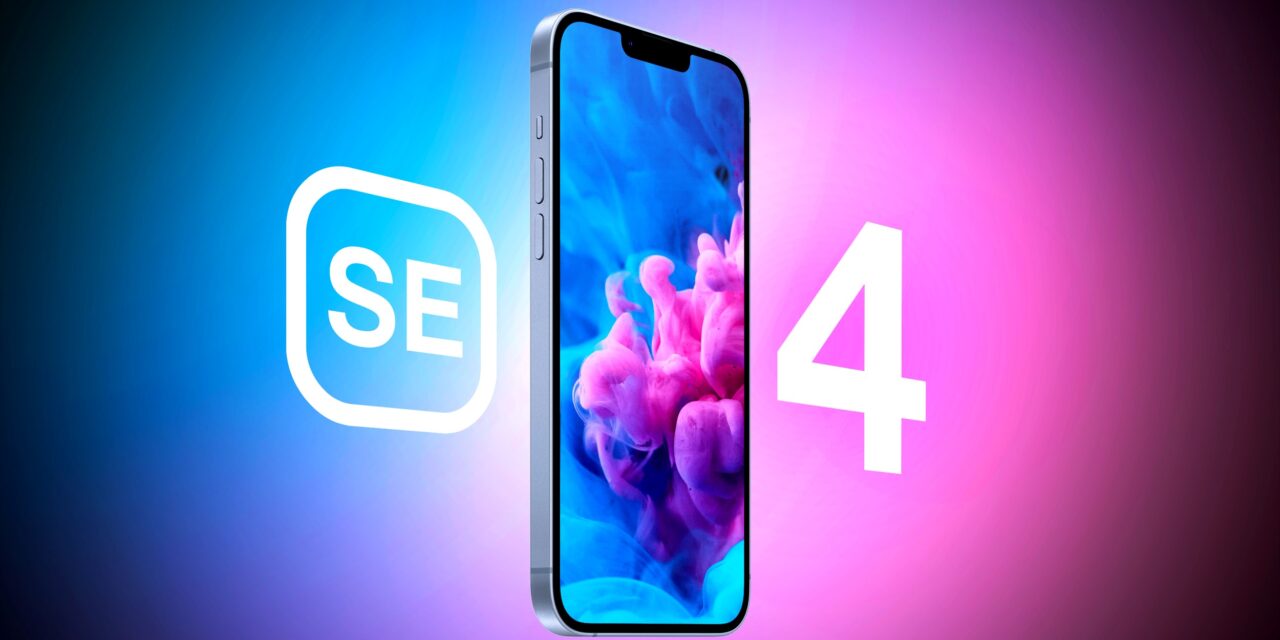Based on additional information received by MacRumors following the previous comprehensive report on the iPhone SE 4, it appears that the claims made in the earlier article are further substantiated.
The iPhone SE 4, identified as D59 with the project codename Ghost, continues Apple’s budget-oriented iPhone line and is anticipated to replace the existing third-generation iPhone SE.
The upcoming fourth-generation iPhone SE is set to depart from the aging iPhone 8-style design, characteristic of the last two generations of the iPhone SE. Instead, the iPhone SE 4 will adopt a more contemporary appearance and an increased display size, closely resembling the base model iPhone 14.
Newly acquired specifications reveal that the iPhone SE 4 will utilize a modified version of the existing iPhone 14 chassis, featuring the same flat design. In its current stage, the dimensions of the iPhone SE 4 align perfectly with those of the base model iPhone 14. Recent findings also confirm that the fourth-generation iPhone SE will forego a Touch ID home button, opting for an all-screen design derived from the iPhone 14, with Face ID serving as the biometric identification method.
To highlight the size difference between the iPhone SE 4 and the current third-generation iPhone SE, the dimensions of the iPhone 14 and iPhone SE 3 are provided below:
iPhone 14 dimensions and weight:
- Length: 146.7 mm
- Width: 71.5 mm
- Thickness: 7.80 mm
- Weight: 172 g
iPhone SE 3 dimensions and weight:
- Length: 138.4 mm
- Width: 67.3 mm
- Thickness: 7.3 mm
- Weight: 144 g
The iPhone SE 4 is expected to be lighter than the iPhone 14 by approximately 6 grams, weighing 165 grams. This weight difference is likely due to the single-camera design Apple has planned for the device. In contrast to the iPhone 14, the iPhone SE 4 will feature a single 48-megapixel rear camera, codenamed “Portland,” with a custom backplate designed to accommodate the new approach.
The decision to employ a single-camera design aligns with the tradition of previous iPhone SE models, with the flash located in a similar position. Substantial evidence supports this design choice, as highlighted in Apple’s internal documentation, marking it as a significant departure from the iPhone 14.
Apart from the single-camera design, no other factors are anticipated to significantly impact the weight of the iPhone SE 4. No changes in materials are expected, with the fourth-generation iPhone SE using the same 6013 T6 aluminum and glass backplate found in the iPhone 14. Prototype versions of the iPhone SE 4 have been observed in a black color closely resembling the Midnight variant available for the iPhone 14, indicating that black might be one of the color options for the fourth-generation iPhone SE.
Although the chassis dimensions of the iPhone SE 4 match those of the base model iPhone 14, the device will introduce two notable features distinguishing it from previous iPhone models – a multi-purpose Action button and a USB-C port.
The Action button, positioned above the volume buttons, is user-configurable and was initially introduced with the iPhone 15 Pro, replacing the mute switch. Current information suggests that Apple aims to standardize the Action button across the entire iPhone 16 range, eventually including it in the iPhone SE 4. As of now, the development status of the fourth-generation iPhone SE suggests a potential release date in 2025.
While Apple is exploring a new capacitive Capture button for the iPhone 16 range, there is no indication that this feature is being tested on the iPhone SE 4. The Capture button is expected to remain exclusive to the iPhone 16 lineup.
It is crucial to note that the information presented here is based on pre-production details and may not accurately represent the hardware found in final mass production units, as changes are possible during development.






Recent Comments